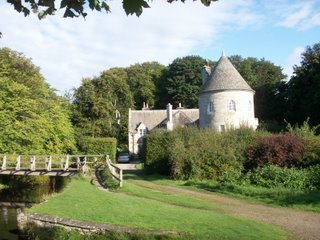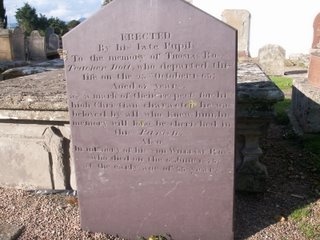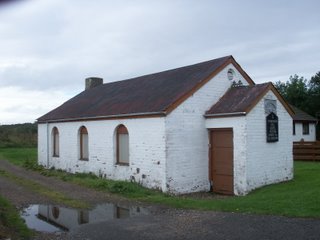
There is much written today about a new way of being a Christian in the post-modern era. If modernism has been bad for Christianity why are so many looking forward instead of back? Medieval monastics, Celtic missionaries, and reformers are all from a pre-modern world. We can learn a lot from all quarters of the historic church (although liberals would say watch you do not become too conservative and conservatives would probably say watch you do not become too liberal). As we step into the future do we always need to look back? We can reach back, look and listen, but we can then, in an escapism way look to an imaginary golden age – is this unfaithful to Christ (........ with you until the ends of the earth)?
Our world needs pointers/missionaries for those people of the modern world who are entering the post-modern era. Those pointers will need to be rooted and strong – more powerful than the modern or post-modern culture. They will need to be as passionate as those of the past, be it Eastern Orthodox, pre-Protestant, post Reformation, Liberal, Conservative or Pentecostal – a person who encapsulates all of Christ without loss to any of His theology! (It's more than being ecumenical). Can that person seek to have and use the combined best of the six traditions of the Christian faith, Contemplative, Holiness, Charismatic, Social Justice, Evangelical and Incarnational, without others looking for labels, and deal with the scepticism from within the current church make-up!?
Of course some will see it as pig-headed, eccentric, unbridled, even cavaliering but I suppose many can be misunderstood and have been, including Jesus. All the more reason that the pointer needs to be rooted in Christ. I await with expectancy for some to push their heads above the crowd and point to Jesus Christ and communicate Him to a culture – post-modern. Many are considering it!
Our world needs pointers/missionaries for those people of the modern world who are entering the post-modern era. Those pointers will need to be rooted and strong – more powerful than the modern or post-modern culture. They will need to be as passionate as those of the past, be it Eastern Orthodox, pre-Protestant, post Reformation, Liberal, Conservative or Pentecostal – a person who encapsulates all of Christ without loss to any of His theology! (It's more than being ecumenical). Can that person seek to have and use the combined best of the six traditions of the Christian faith, Contemplative, Holiness, Charismatic, Social Justice, Evangelical and Incarnational, without others looking for labels, and deal with the scepticism from within the current church make-up!?
Of course some will see it as pig-headed, eccentric, unbridled, even cavaliering but I suppose many can be misunderstood and have been, including Jesus. All the more reason that the pointer needs to be rooted in Christ. I await with expectancy for some to push their heads above the crowd and point to Jesus Christ and communicate Him to a culture – post-modern. Many are considering it!









